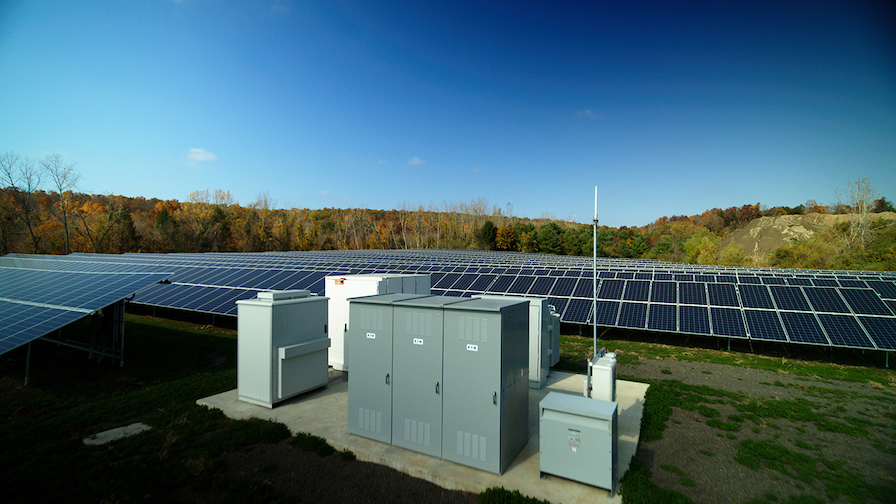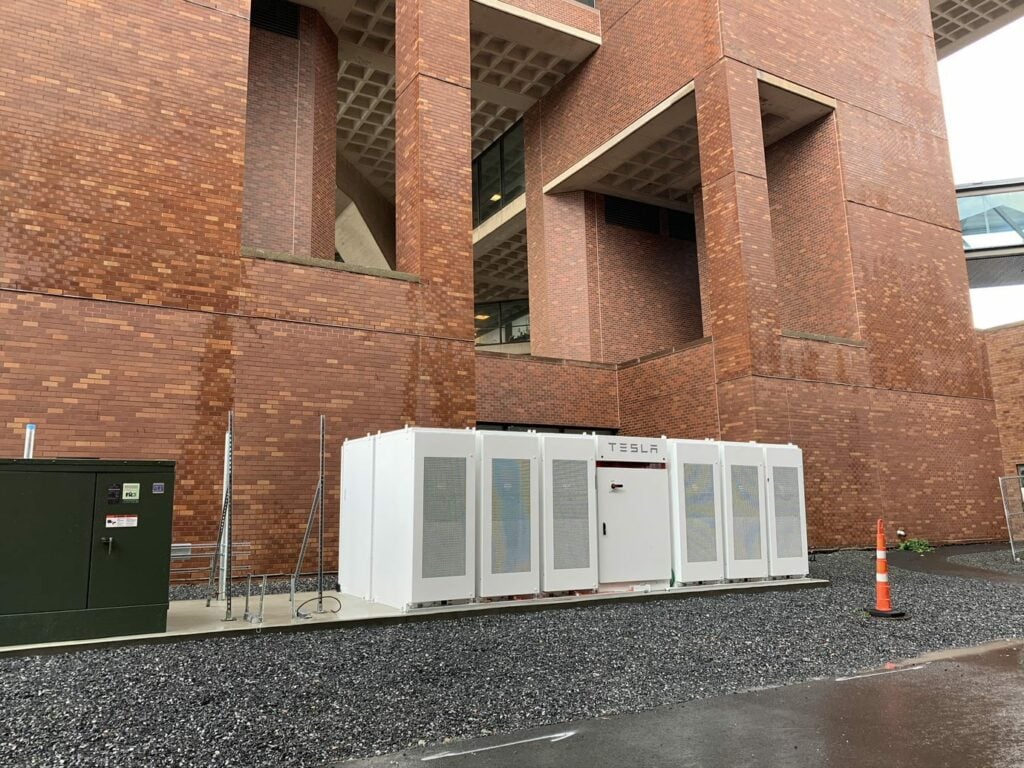
Battery storage is helping businesses in the US and Canada cut their electricity costs and meet their ESG goals and has been doing so for a few years now.
One player in that market is Enel X, the subsidiary of Enel Group focused on delivering integrated solutions for commercial and industrial (C&I) customers to help them reduce their demand for energy from the grid at the most expensive (and often polluting) peak times. This often happens in tandem with installing smaller scale renewable energy facilities, typically onsite or rooftop solar.
Enjoy 12 months of exclusive analysis
- Regular insight and analysis of the industry’s biggest developments
- In-depth interviews with the industry’s leading figures
- Annual digital subscription to the PV Tech Power journal
- Discounts on Solar Media’s portfolio of events, in-person and virtual
Enel X has expanded its presence in North America over the past few years through its projects and bringing onboard market-specific knowledge and technologies from the acquisition of smart energy platform companies Demand Energy Networks, eMotorwerks and EnerNOC. While rival Engie recently spun out and sold off its battery storage subsidiary Engie EPS to Taiwan Cement Corporation, Enel X has gradually become more integrated into its parent company’s activities.
In an interview with Energy-Storage.news, Enel X Battery Energy Storage solutions chief David J.A. Post explains how energy storage for C&I customers can have the maximum economical and ecological impact.
Post is head of e-storage solutions, managing Enel X’s storage activities and leading its efforts in the deployment of customer-sited energy storage solutions. He is also currently President of the European Association for Storage of Energy (EASE).
Through the acquisition of Demand Energy Networks, the company has a large project footprint in New York, and since then has expanded its business to other regions of North America including: California, Massachusetts, Puerto Rico and Ontario, Canada.
Over 250MWh of storage has been contracted, focusing — among other things — on helping customers minimise their electricity costs by reducing demand from the grid during peaks, or when electricity is most expensive, and earn payments by enrolling the storage system into demand response and other energy market programs.
Software is what really matters
In Ontario for example, system peak events can make up around 60% or even 70% of an industrial power user’s bills – depending on how much energy is consumed.
“These projects have gone bigger in size. Initially, we started with small projects, but then as I guess, larger industrial customers saw a benefit to this, the size of the projects have gone up.So initially, it was maybe half a megawatt per project now we have some of the projects are even 10MW and larger and you’re typically talking about large manufacturing, or large industrial processes, like a mining company, or a foods production company,” Post says.
Outside of Ontario, the business model can vary. Each of the US regions Enel X is active in has different revenue streams battery storage can tap into based on their market design and grid conditions. What matters, he says, is the software Enel X provides being capable of capturing and monetising all of the benefits that batteries can provide.
Enel X’s DER Optimization Software uses advanced machine learning techniques to learn a facility’s energy needs and automatically charge and discharge battery assets at the optimal times to deliver the highest financial return possible, and without interrupting a customer’s operations.
That could mean helping Massachusetts or California businesses, educational facilities and others to install rooftop solar with batteries, to up their sustainability game and net specific state-wide solar-plus-storage incentives like SMART in Massachusetts or SGIP in California. Or it could be deploying solar-storage-genset microgrids in Puerto Rico or helping manage demand response in New York.
In many of these cases, battery storage is part of a larger integrated solution to help customers manage their energy demand. Combining storage with onsite renewables and EV charging is another example of a use case that presents a real opportunity, Post says.
“We are also looking at other states, we have participated in what we call dFTM solutions: distributed in front-of-the-meter solutions, typically with electric coops and munis (co-operatives and municipal utilities),” Post says.
“It’s actually a very similar business model as a pure behind-the-meter. Some states have also to deal with coincident peaks at the muni level or at the coop level. So we’ve been participating in several RFPs for that.”

Educating stakeholders is priority in new markets
From this vantage point of experience in North America, Enel X wants to start using that knowledge to enter new markets.
One example is Peru, where the coincident peaks are measured on a monthly basis (in Ontario, five peaks in the summer period are taken into account). A battery energy storage system (BESS) can reduce those coincident peaks and Post says Enel X is pleased at how much interest there has been from Peru’s industrial customers, where the company is kicking off with a fairly small project for a plastic kitchenware manufacturer.
“Right now we have almost line of sight of 30MW of projects in Peru, which is a small number for the big renewable energy world, but for the C&I world, it starts to become a relevant number, and there’s all big names behind it.”
In Australia, Enel X has a couple of projects in the works. Electricity price volatility in Australia makes it a “very interesting market,” and with the right software in place, there are up to four sources of revenue available that can be captured with a BESS.
“We’re also looking at markets in Europe. From the Enel X perspective, we typically try to first explore the legacy markets where we are already, simply because it makes the dialogue with local stakeholders easier. If you go to a market like Peru or Chile, where you’ve been already for 20 years, the regulator is familiar with Enel as a group and we just have a higher level of comfort with the general legal and regulatory framework and how things work.”
Projects are getting bigger, more markets are opening up, the future looks exciting for C&I energy storage, but there’s still a lot of work to be done. Whether C&I energy storage will be recognised as having as much as role to play as front-of-meter storage in the energy transition is ultimately down to regulators and grid operators, somewhat.
“The general thing that we’re encountering is typically, the question is, as a grid operator: do you want to go large scale FTM, or you want to go smaller scale or a combination?”
Post asserts that the grid needs a combination of both, and the C&I rollout can help the rest of the grid to become much more sustainable, in many different markets around the world. The resiliency role that solar and storage can play is also becoming more and more recognised.
With extreme weather events increasing in intensity and frequency, businesses are examining their operational resiliency. Microgrids or solar-plus-storage systems can support that and help keep businesses running even after major storms, for example.
“Right now, the market is still in a phase where you need to educate both the stakeholders at the regulatory and political level as well as the customers on the benefits of these solutions. But more and more, we start seeing customers getting comfortable with the concept of installing these type of solutions on their premises.
“It’s getting the customer comfortable with the business model, trying to also provide flexible funding options. We’re trying to offer the customer a suite of different types of financial options, be it through selling them an installation, and we provide the O&M and the software management, to joint investment, doing a leasing arrangement,” he says.
“We’ve figured out different solutions with the ambition to be the trusted energy partner for C&I customers.”

